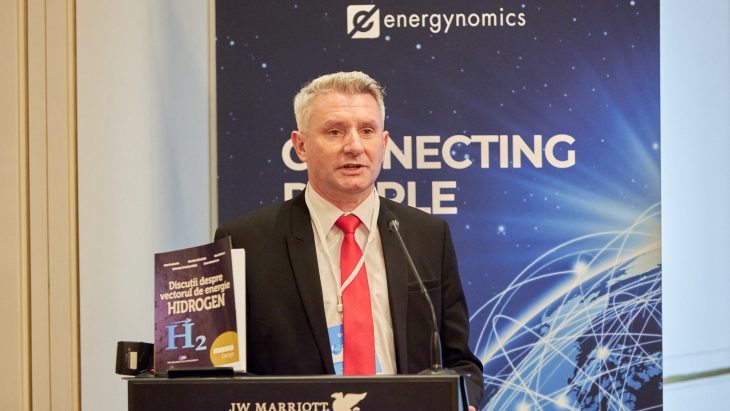The future of mankind will certainly be one in which electricity will play a crucial role, but it will also be necessary to use natural gas distribution infrastructure and district heating in parallel, said Cristian Călin, technical manager in the gas sector at Delgaz Grid.
“The future will be green, but not with radical solutions. We see an optimal hybrid solution: electricity, green gas, central heating. We should not risk everything on one solution that is not feasible in the long term anyway. Yes, electricity is the main solution of the future, but alongside it is the gas infrastructure and gas-greening solutions. Let’s not put all our eggs in one basket. The investments needed to cope with a fully electrified society can be made, but in the long term, not in the medium term,” said Călin, at the conference “Hydrogen Project – what is Romania up to”, organised by Energynomics.
In his view, district heating is very important and that is why each locality needs to develop a heating strategy taking into account its own specificities. Romania, in particular, needs to modernise the district heating plants that are suitable for such investments and adopt mixed heating solutions. In addition, existing limitations need to be taken into account. One of the problems is that the electricity grid is already under technical and capacity pressure.
“All will not be electric in 2050; that would be a huge challenge in terms of investment and the time available for it. On the other hand, we should not forget the realities in Romania! We have a gas infrastructure of 70,000 kilometres, and this is the cheapest solution to transport hydrogen, biomethane or synthetic methane. There is a lot of talk about the all-electric concept, but no serious talk about the state of the grids, the need to reinforce the grid and the electrical usage installations, which today are designed for three sockets and five light bulbs. What will happen when we go all electric?” continued Călin.
Delgaz Grid El has already carried out a project testing the use of a mixture of hydrogen (20%) with natural gas. The test showed that, at this concentration, all installations and electrical appliances in more than 100 households functioned optimally.
Catalin also said that in future tests Delgaz Grid will increase the share of hydrogen to 30%, the maximum value up to which no modification of the grid or household appliances is necessary.
The conference “Hydrogen Project – what is Romania up to” was organized by Energynomics with the support of our partners Elektra Renewable Support and Horváth.
On this occasion, the Didactic and Pedagogical Publishing House presented the book “Discussions the Hydrogen Energy Vector”, authored by Ioan Iordache, Dumitru Chisăliță, Hans Marius Shuster, Cristian Călin, and Oana Dumitrean, as part of the collection “Academica energie.”

alongside it is the gas infrastructure and gas-greening solutions. Let’s not put all our eggs in one basket
Greeting